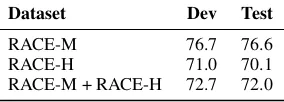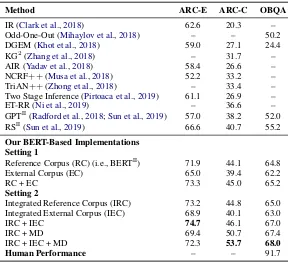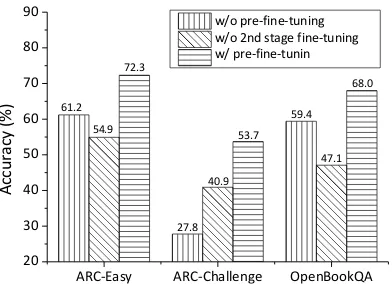Improving Question Answering with External Knowledge
Full text
Figure




Related documents
Kobayashi added that they believed an updated analysis report was critical to the LUC’s decision and noted that petitioner has not received any objections from the parties for
Most integrated library automation systems have maintained the traditional division of technical services into cataloging, monograph acquisitions, and serials modules.. These
Mutations in chromatin remodeling genes are not limited to i17q positive tumors and seen in the SHH group Mutations in genes over-represented in i17q tumors may underscore the
The blocking MAbs (5C9 IgG, K1-70 IgG, and MAb-B2 IgG) have the ability to inhibit the stimulating activity of patient serum TRAbs as assessed using CHO cells expressing the TSHR..
Objectives— Recent studies have found that cases with oropharyngeal squamous cell carcinoma (OPSCC) positive for HPV16 genotype have better overall survival compared with
When we reflect on problems we experience – whether these are organisational or personal – it often occurs to us that these problems are situated within behaviours, actions,
The fresh weight and dry weight of root (gm), under soil parameter and chemical fertilizer of pearl millet as influenced by different concentrations of parameter, after 60
Conclusions: Serum hs-CRP > 1 mg/L is an independent risk factor for LHBT tear, along with the expected risk factors of age, subscapularis tendon tear, retraction degree of
